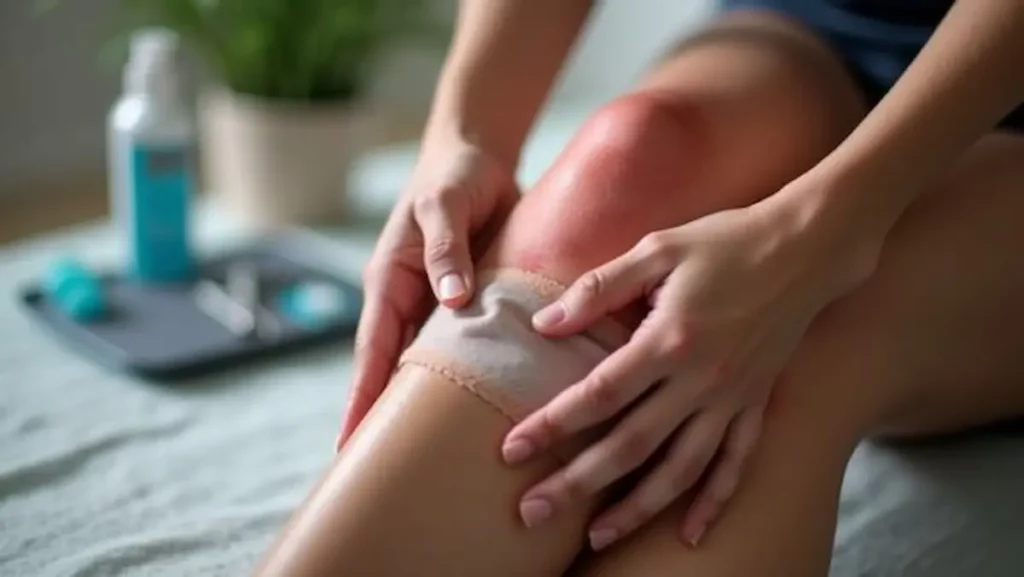
How to stretch a knee: simple tips for better mobility
Get the best techniques to stretch your knee effectively and safely, improving flexibility and preventing injury—discover the key moves you shouldn’t miss.


Muscle strains can slow you down, but the right steps can speed up recovery.
From early care to long-term habits, what you do in the first days makes all the difference.

So, how do you actually speed up muscle strain recovery and get back to training safely?
Muscle strains occur when fibers within a muscle or tendon are overstretched or torn, often due to excessive force or sudden movements.
Common causes include improper warm-up, overuse, inadequate flexibility, or lifting heavy objects incorrectly.
Recognizing these factors helps individuals take preventive measures, promoting safety and reducing the risk of injury during physical activities or daily tasks.
Promptly addressing a strain can significantly influence the healing process.
Immediate actions include gently applying cold packs to reduce swelling and pain while avoiding direct skin contact. Elevating the injured area helps minimize inflammation.
It is crucial to avoid any activities that exacerbate discomfort. These careful measures prioritize safety and lay the foundation for effective recovery.
Recovery hinges on adequate rest and immobilization, which are essential to prevent further damage and facilitate tissue repair.
Limiting movement reduces strain on injured muscles, allowing fibers to heal properly. Proper rest minimizes inflammation and pain, promoting a safer, more efficient recovery process.
Overexertion during early stages can worsen the injury, prolonging healing time and increasing complications.
Although both ice and heat therapy are commonly used to address muscle strain, their effectiveness depends on proper timing and application.
Ice reduces swelling and numbs pain when applied within the first 48 hours, while heat promotes blood flow and flexibility after swelling subsides.
Both should be used in 15-20 minute intervals with a barrier to protect skin and prevent damage.
In addition to physical therapies like ice and heat, proper nutrition plays a significant role in muscle strain healing.
Consuming adequate protein supports tissue repair, while antioxidants from fruits and vegetables reduce inflammation. Staying hydrated aids recovery by maintaining blood flow.
Avoid excessive alcohol and processed foods, as they may hinder healing. Consulting a healthcare professional ensures a safe, balanced diet tailored to individual needs.
Once the initial pain and swelling from a muscle strain have subsided, gentle stretching can be introduced to promote flexibility and prevent stiffness.
Stretching should begin slowly, avoiding any movements that cause discomfort. Holding stretches for 15–30 seconds without bouncing helps maintain safety.
Consultation with a healthcare professional ensures the timing and techniques suit individual recovery progress.
Incorporating strengthening exercises is a crucial step in muscle strain recovery to rebuild muscle strength and prevent future injuries.
These exercises should be introduced gradually, focusing on controlled movements and low resistance. Proper technique is essential to avoid re-injury.
Consulting a healthcare professional before starting strengthening routines ensures exercises are safe, appropriate, and tailored to the individual’s recovery stage.
Strengthening exercises lay the groundwork for muscle recovery, but physical therapy offers a comprehensive approach that addresses pain management, flexibility, and functional restoration.
Tailored treatments, such as guided stretching and low-impact movements, ensure safe progression while minimizing risk of re-injury.
Physical therapists monitor healing closely, adjusting protocols to optimize recovery speed and promote long-term muscle health within safe limits.
Although recovery techniques are essential, preventing future muscle strains requires proactive strategies that extend beyond rehabilitation.
Consistent stretching, proper warm-up routines, and strength training improve muscle resilience.
Additionally, maintaining good posture and avoiding sudden increases in activity intensity reduce injury risk.
Adopting these safety-focused habits supports long-term muscle health and minimizes the chance of recurring strains.
When should a muscle strain prompt a visit to a healthcare professional? Immediate medical attention is necessary if severe pain, swelling, or bruising occurs.
Inability to move the affected muscle, numbness, or persistent weakness also warrant evaluation.
Early diagnosis prevents complications and ensures appropriate treatment, promoting safer and faster recovery from muscle strains.
Speeding up muscle strain recovery involves a combination of rest, immobilization, and appropriate use of cold therapy to reduce swelling and pain. Gradual reintroduction of stretching and strengthening exercises supports muscle rebuilding, while proper nutrition aids healing. Consulting healthcare professionals and engaging in preventive measures, such as warm-ups and consistent stretching, can further enhance recovery and reduce the risk of future injuries. Recognizing when to seek medical attention ensures timely and effective treatment.

Get the best techniques to stretch your knee effectively and safely, improving flexibility and preventing injury—discover the key moves you shouldn’t miss.

Learn how stretching before exercise boosts performance and prevents injuries, unlocking benefits you might be missing out on. Discover the key reasons now.

The ultimate guide reveals essential techniques and tips to prevent injuries—discover how simple changes can protect your body and enhance your performance today.

Wondering if stretching after working out is truly mandatory? Discover the surprising benefits and expert insights that might change your routine forever.

Learn the surprising science behind ice baths and their true impact on muscle recovery—you might be missing crucial facts that change everything.

Discover why stretching feels good beyond muscle relief—delving into the surprising science that transforms simple movements into moments of true relaxation.